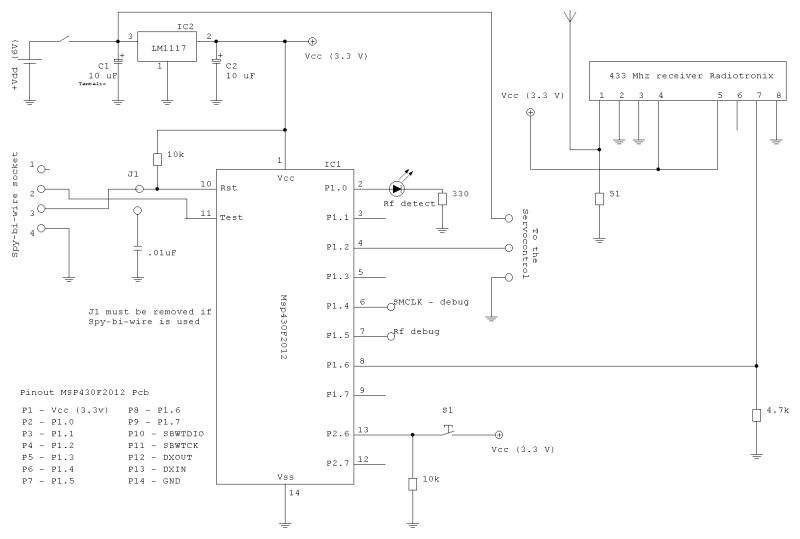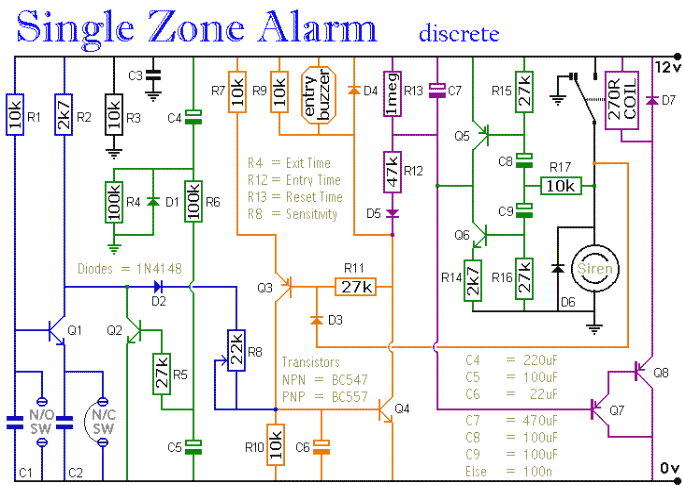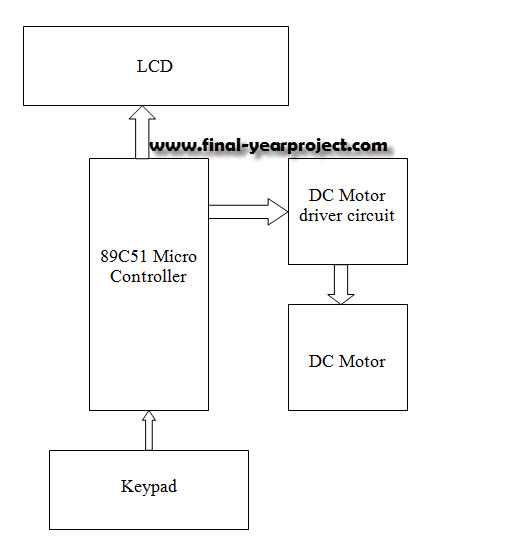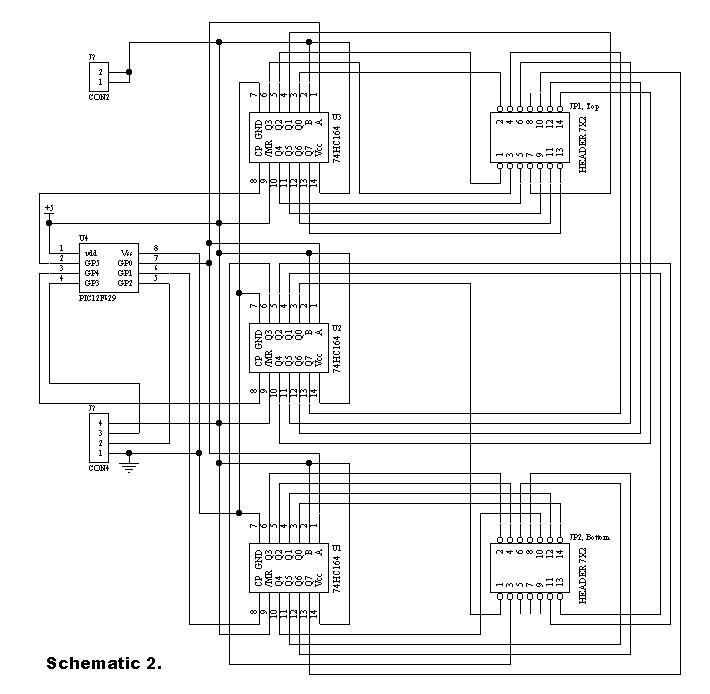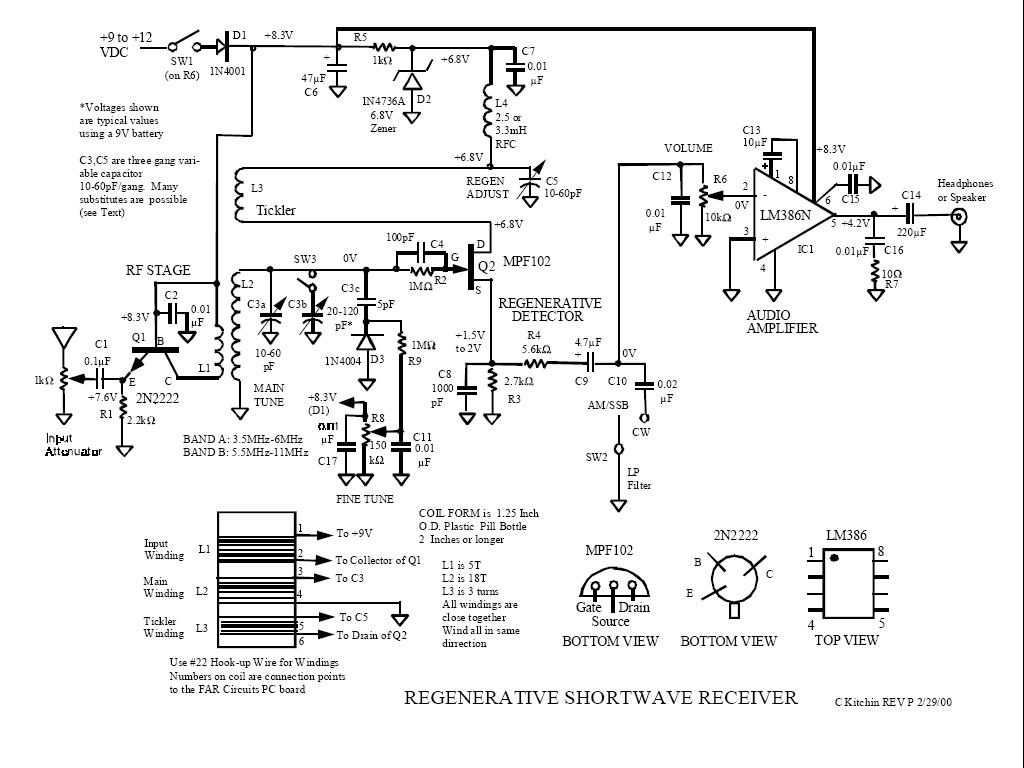
project Huminator
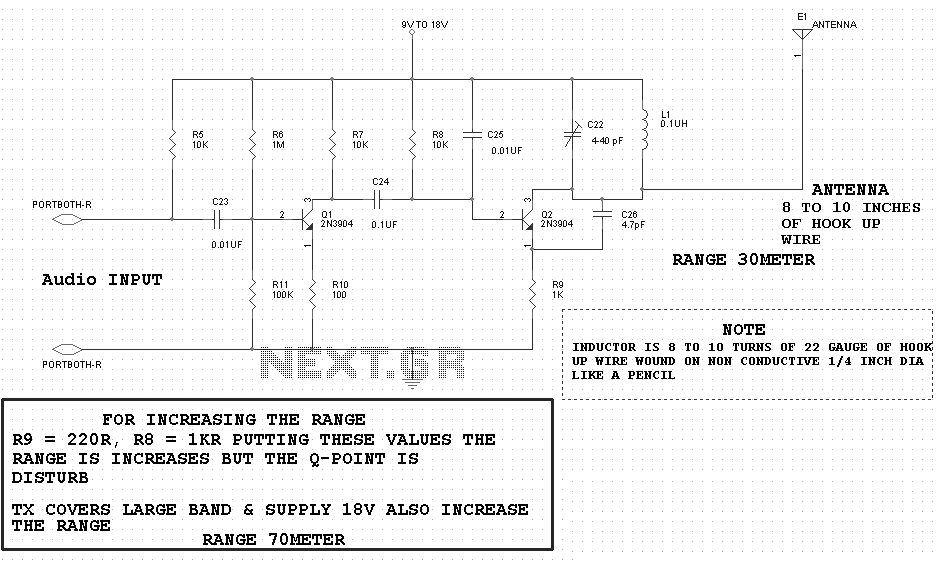
The orange lines represent the positive voltage, while the yellow lines indicate the negative voltage, commonly referred to as ground. Wiring can be accomplished by soldering components directly to wires or by utilizing a small piece of perfboard or circuit board. To ensure functionality, it is essential to verify the connections on the DC power jacks before soldering them. It is important to note that the standard for pedal powering is tip-negative.
To create a power patch cable connecting the output of the Huminator to a pedal, two 2.1mm DC plugs and a length of two-conductor wire are required. The two-conductor wire should be soldered to each of the plugs to complete the setup. Afterward, connect a 9-volt AC/DC adapter to the input. Subsequently, use a 2.1mm DC to DC patch cord to connect the output of the Huminator to the pedal, effectively eliminating unwanted hum.
The circuit described involves a basic power distribution setup for pedals, commonly used in audio applications. The positive voltage is supplied through the orange lines, while the yellow lines serve as the ground reference. The use of a perfboard or circuit board is recommended for organizing connections and ensuring reliability. Soldering is the preferred method for establishing connections due to its durability and low resistance.
The construction of the power patch cable is straightforward. The two 2.1mm DC plugs are standard connectors used in many musical devices. The two-conductor wire should be selected based on the current requirements of the connected devices, ensuring it can handle the necessary load without overheating. Proper soldering techniques should be employed to avoid cold joints, which can lead to intermittent connections.
Verification of the DC power jacks is crucial. A multimeter can be utilized to ensure that the polarity is correct and that the connections are secure before soldering. This step is vital to prevent damage to the pedals or the Huminator due to incorrect wiring.
Overall, this circuit design is effective for powering pedals in a guitar or audio setup, providing a reliable source of power while minimizing noise interference. The tip-negative standard is widely accepted in the industry, ensuring compatibility with most pedals. Following these guidelines will result in a well-functioning power distribution system for audio applications.The orange lines indicate the positive voltage and the yellow lines indicate the negative voltage, also known as ground. You can do the wiring by soldering components directly to wires, or use a small bit of perfboard/circuit board.
To ensure this thing actually works for you, be sure to check the connections on the DC power jacks before you solder them. Remember that the standard for pedal powering is tip-negative. To make a power patch cable to go from the output of the Huminator to your pedal, get two 2. 1mm DC plugs, and a length of two-conductor wire. Solder the two-conductor wire to each of the plugs and you`re ready to go. Plug your 9 volt AC/DC adaptor into the input. Then plug a 2. 11mm DC to DC patch cord into the output of the Huminator and then into your pedal. No more hum! 🔗 External reference
To create a power patch cable connecting the output of the Huminator to a pedal, two 2.1mm DC plugs and a length of two-conductor wire are required. The two-conductor wire should be soldered to each of the plugs to complete the setup. Afterward, connect a 9-volt AC/DC adapter to the input. Subsequently, use a 2.1mm DC to DC patch cord to connect the output of the Huminator to the pedal, effectively eliminating unwanted hum.
The circuit described involves a basic power distribution setup for pedals, commonly used in audio applications. The positive voltage is supplied through the orange lines, while the yellow lines serve as the ground reference. The use of a perfboard or circuit board is recommended for organizing connections and ensuring reliability. Soldering is the preferred method for establishing connections due to its durability and low resistance.
The construction of the power patch cable is straightforward. The two 2.1mm DC plugs are standard connectors used in many musical devices. The two-conductor wire should be selected based on the current requirements of the connected devices, ensuring it can handle the necessary load without overheating. Proper soldering techniques should be employed to avoid cold joints, which can lead to intermittent connections.
Verification of the DC power jacks is crucial. A multimeter can be utilized to ensure that the polarity is correct and that the connections are secure before soldering. This step is vital to prevent damage to the pedals or the Huminator due to incorrect wiring.
Overall, this circuit design is effective for powering pedals in a guitar or audio setup, providing a reliable source of power while minimizing noise interference. The tip-negative standard is widely accepted in the industry, ensuring compatibility with most pedals. Following these guidelines will result in a well-functioning power distribution system for audio applications.The orange lines indicate the positive voltage and the yellow lines indicate the negative voltage, also known as ground. You can do the wiring by soldering components directly to wires, or use a small bit of perfboard/circuit board.
To ensure this thing actually works for you, be sure to check the connections on the DC power jacks before you solder them. Remember that the standard for pedal powering is tip-negative. To make a power patch cable to go from the output of the Huminator to your pedal, get two 2. 1mm DC plugs, and a length of two-conductor wire. Solder the two-conductor wire to each of the plugs and you`re ready to go. Plug your 9 volt AC/DC adaptor into the input. Then plug a 2. 11mm DC to DC patch cord into the output of the Huminator and then into your pedal. No more hum! 🔗 External reference
